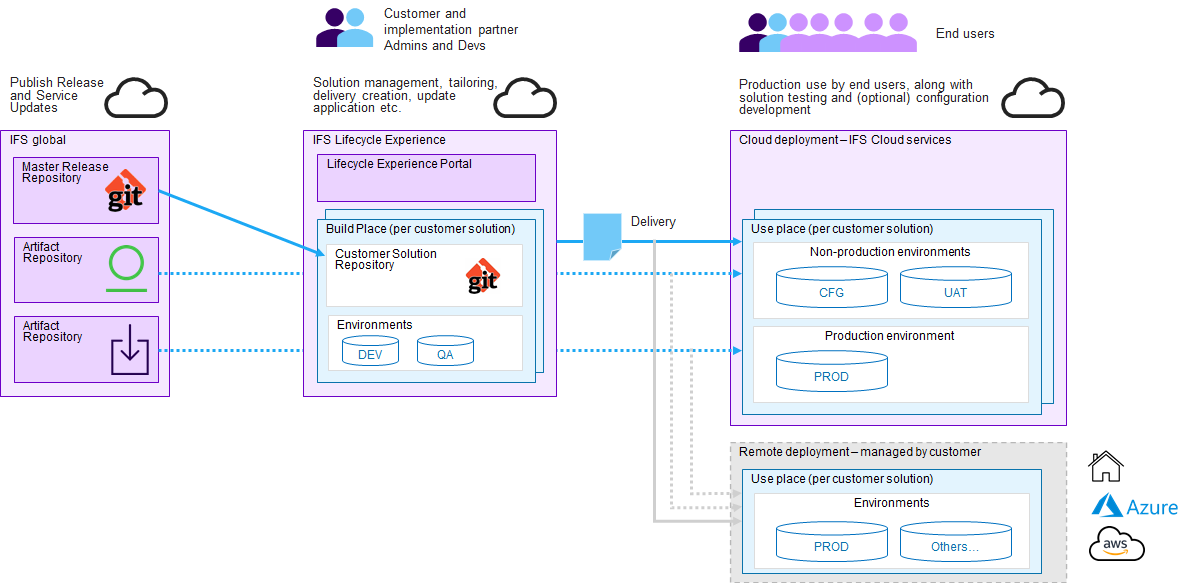High Level Architecture¶
At the highest level the architecture of IFS Cloud for a customer looks like this:
- IFS publishes available IFS Cloud release and service updates in a Master Release Repository. Associated artifacts (e.g. container images) are published to an artifact repository and additional content (e.g. language files) published to a download location.
- The customer (optionally with support from an implementation partner) use the IFS Lifecycle Experience portal and capabilities of the Build Place to define and tailor the customer solution, apply service and release updates, and create deliveries which are used to update Use Place environments.
- Deliveries from the build place are then applied (installed) into the Use Place environments used for testing and subsequent production use by end users. When a delivery is installed into a Use Place environment, that environment will "pull" needed artifacts and content from the artifact repository and download location.
The master release repository and Build Place are both cloud services provided by IFS. All customers will use a cloud based Build Place. For the Use Place customers can choose between cloud and remote deployment models.

Build Place¶
The Build Place is accessed through the IFS Lifecycle Experience portal. This is where the lifecycle of the customer solution is managed, including application of service and release updates. Self-service capabilities guide step-by-step through activities such as creating deliveries and performing a release update.
The Build Place is also where any tailoring through customization (extending on the inside) is performed. To this end the Build Place provide self-service capabilities to spin up development environments. It also provides access options for developer to perform elevated access tasks such as debugging.
A typical Build Place contains up to two environments, but has the possibility to provision more.
Important
The Build Place does not and should not contain customer production data.
Use Place¶
The Use Place is where the customer production environment is operated along with any other non-production environments that contain production data (for example as a copy of the production database). The Use Place environments are used for the production use of IFS Cloud, but also for the elements of solution tailoring and testing where it is critical to have production data and/or volumes.
A typical Use Place contains three environments (production, user acceptance test, and configuration) but it can vary depending on customer needs.
The Use Place environments can be deployed under the cloud and remote deployment models.
Deployment Models¶
IFS provides two deployment models for the Use Place.
- Cloud: IFS provides IFS Cloud software as a service (SaaS) to the customer from our cloud. As a customer you connect to the service, and we take care of the rest.
- Remote: Customer solution is managed (tailoring's, updates) in our cloud but the production environments are deployed in a “remote” location of customer's choosing. We supply a packaged installation which the customer operate together with the main database, on supported platform software. Read more in the remote deployment guide.
The cloud deployment model offers higher levels of automation than the remote model. For example deliveries are automatically installed in a cloud deployment, whereas this requires a manual download + install step for remote deployment.
Air-gapped deployment¶
The remote deployment model has the capability to support extreme security scenarios where air gapped deployment is a requirement.